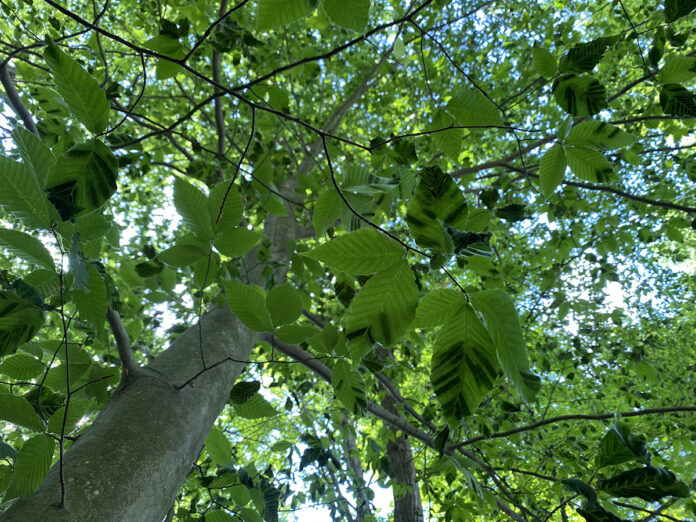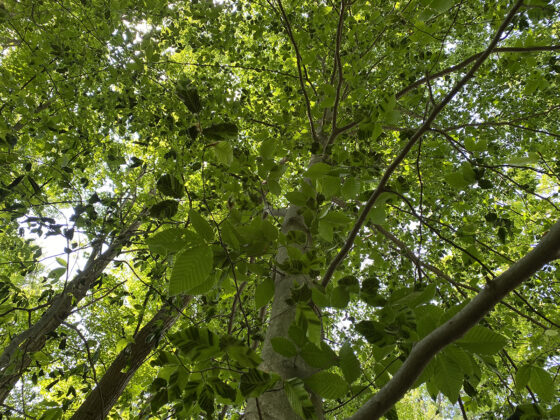
Walking through my parents’ woods last weekend, I noticed a tree with stiff, shriveled leaves. It would be easy to assume the recent drought might be the culprit, but I knew better. I had definitely seen leaves like this before. Never in the woods I know so well, but possibly an Ohio Department of Natural Resources or Ohio State Extension article about beech leaf disease.
Beech leaf disease is a relatively new disease, discovered in 2012 in Lake County, Ohio. Since its discovery, symptoms have been documented in at least a dozen counties in northeast Ohio and parts of Pennsylvania, New York, Connecticut and Ontario, Canada.
Identification
Beech leaf disease is caused by microscopic animals that look like worms called nematodes that live in the leaves and buds of beech trees. Symptoms of beech leaf disease include dark banding on leaves, leaf disfigurement and branch dieback. American Beech, European Beech and other non-native species of beech trees are susceptible to beech leaf disease.
Signs of beech leaf disease
- Striped leaves. Bands of thickened, dark green tissue between the leaf veins are an early sign.
- Shriveled leaves. As beech leaf disease progresses, distorted, puckered or curled leaves may develop. In the late stages, beech leaf disease will cause extreme leaf distortion and curling.
- Consistent symptoms throughout the growing season. Beech leaf disease symptoms are visible from leaf out until fall. They are best seen by looking up into the canopy.
- Branches. Some branches may be affected while others are not.
- Leaf and bud production. Look for reduced leaf and bud production and possible leaf loss as beech leaf disease progresses.
What to do
When I discovered beech leaf disease throughout the woods I love so much I immediately started looking for solutions. Unfortunately, there’s not much that can be done.
Researchers in Ohio studying the disease in Cleveland Metroparks have had some success applying a chemical called PolyPhosphite 30 to beech saplings over a period of five years. The study was expanded to include larger trees in 2021. A couple of insecticides are also being tested as a way of combating the disease, and researchers are considering breeding trees that are genetically resistant to beech leaf disease.
Although no clear control measures have been established, pruning between late August and September to help dry out leaves could help interrupt the nematode’s life cycle, according to David Burke, Holden Forest & Garden’s beech tree expert. Pruning a full tree will increase the amount of light and air circulation that gets to the remaining branches, preventing excess moisture from lingering on the leaves. This is important because nematodes use moisture collected on the outside of leaves to crawl out of the leaves and swim into the buds of the tree to overwinter. If this process could be prevented, the nematodes would get stuck in the leaves and fall off in autumn, which would reduce the tree’s symptoms the following year. Likewise, in a thick stand of trees, it may be beneficial to thin a few out and open the area up to light and air circulation.
It is not recommended to remove all of your beech trees if you have discovered beech leaf disease on your property as some may be resistant to the disease.
It’s important to note all types of beeches are susceptible to beech leaf disease. However, the disease hasn’t affected any other types of trees and it’s harmless to humans and animals.















